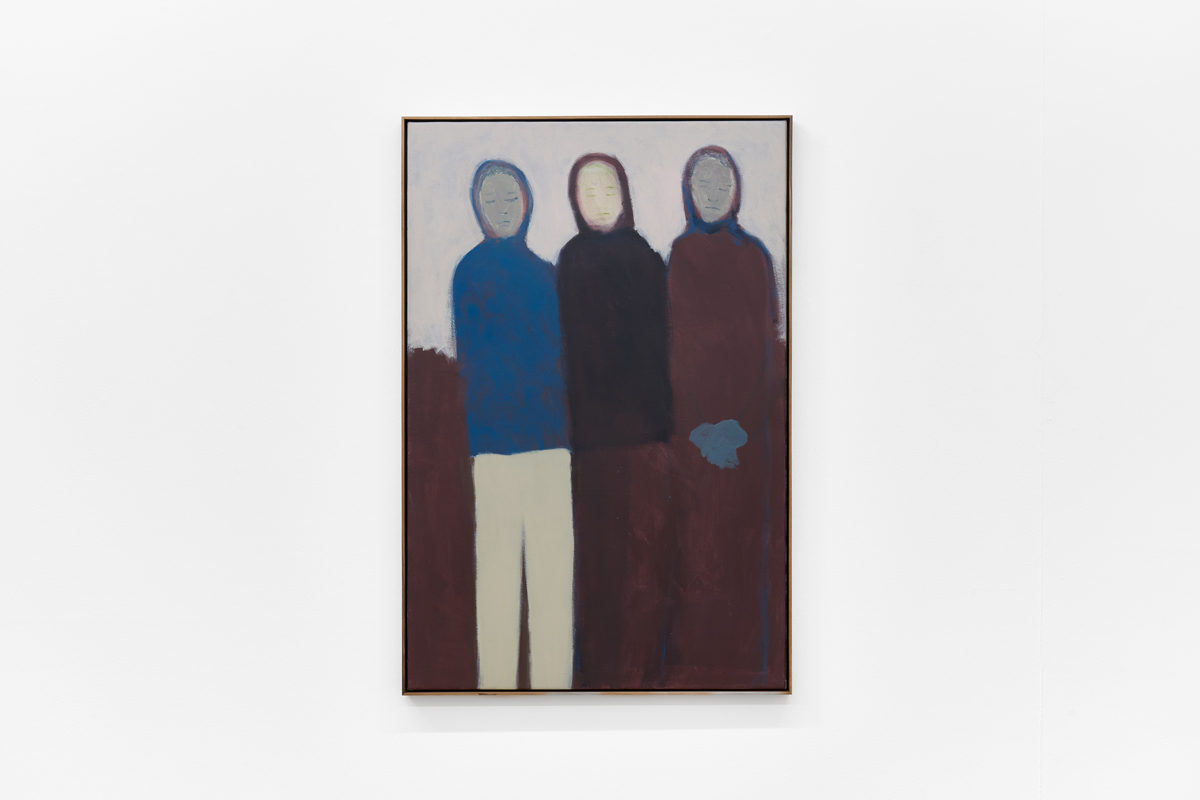

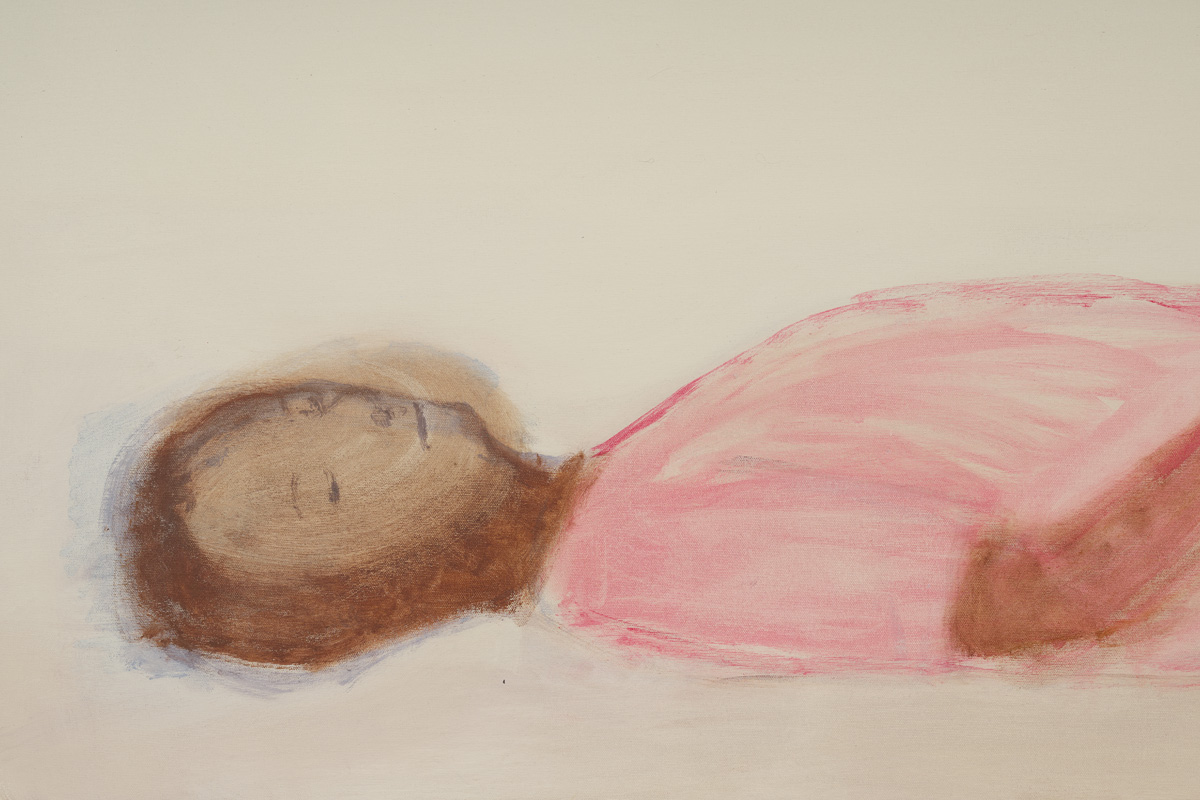

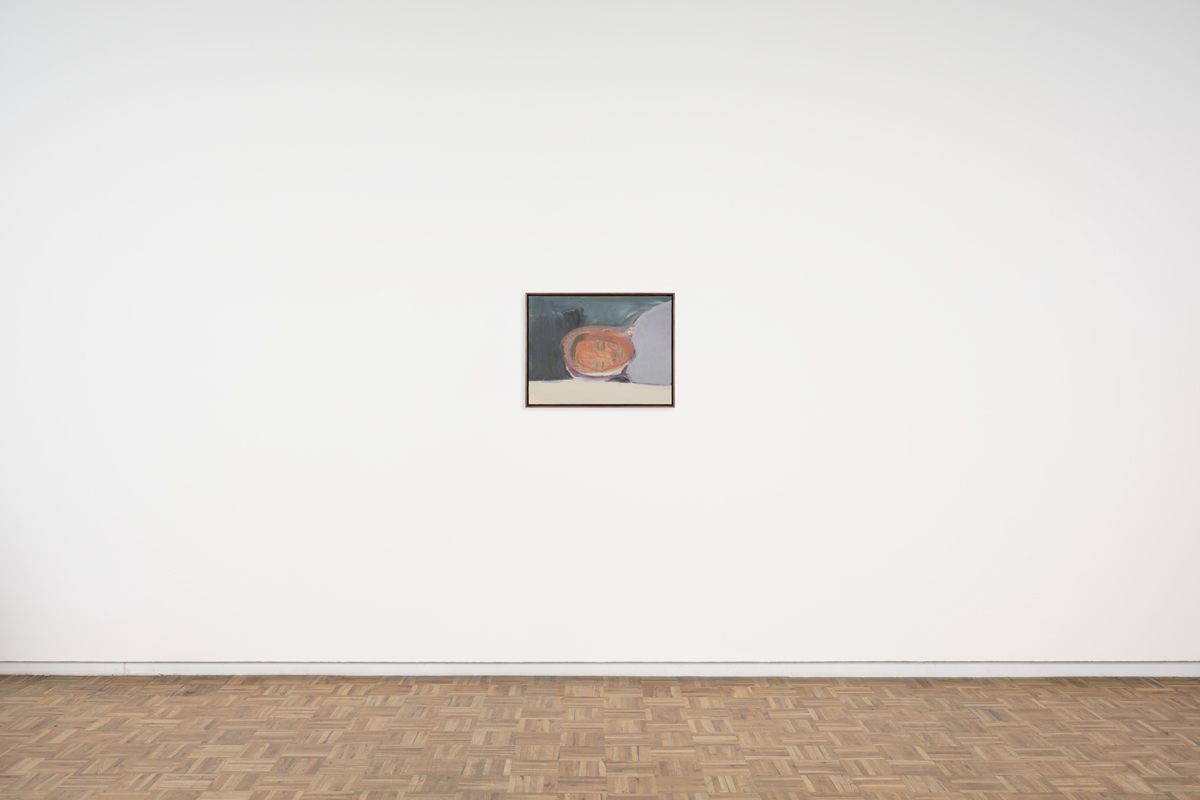
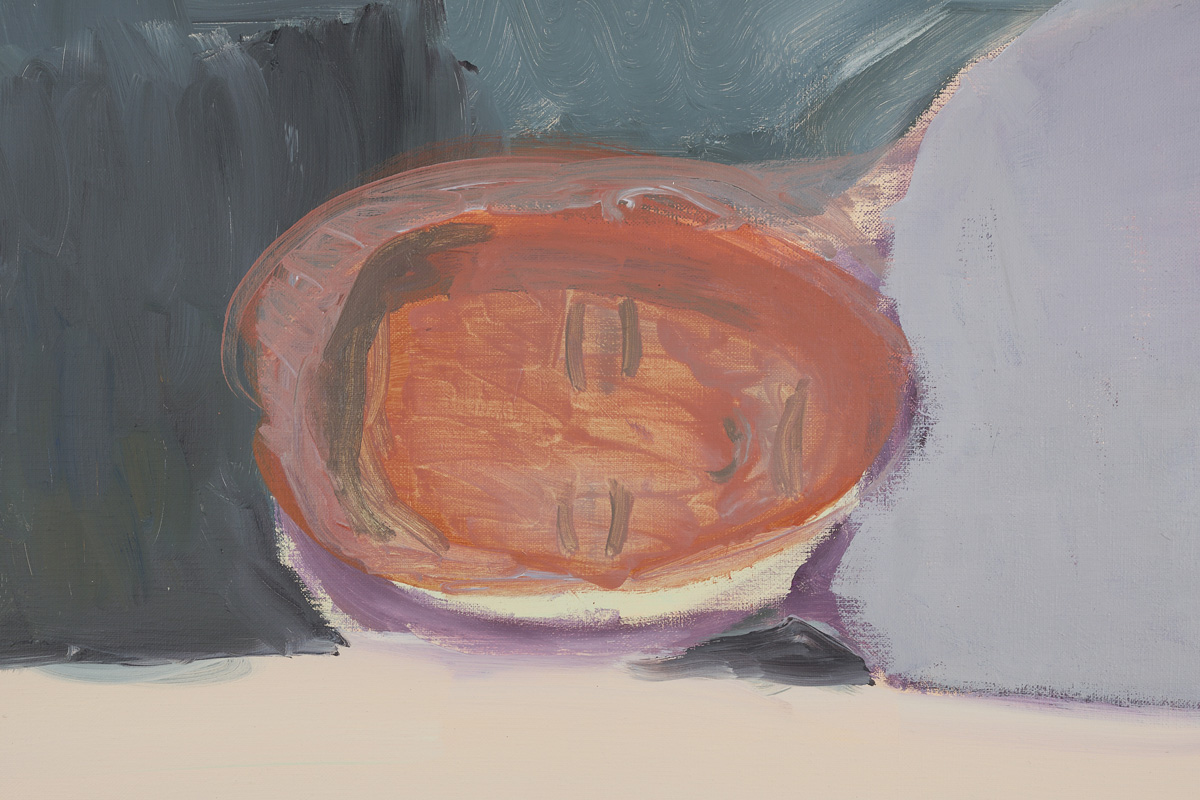



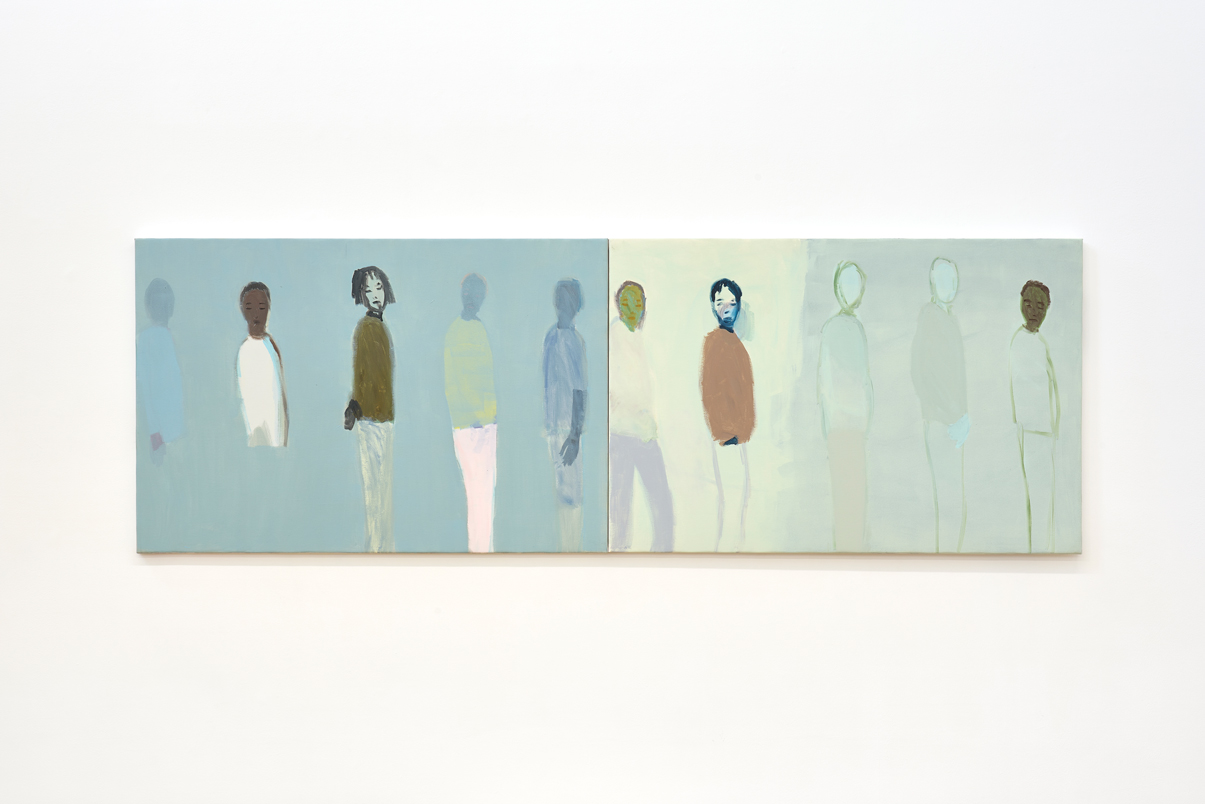
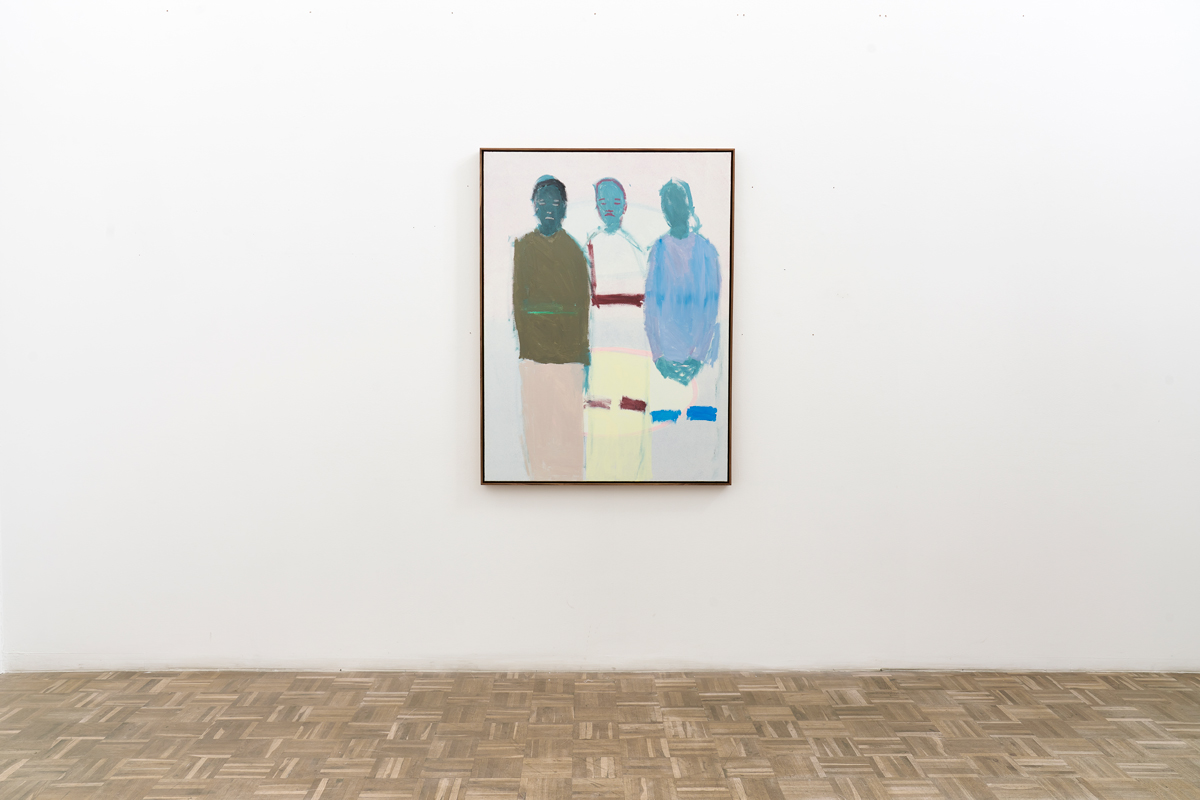









Artist returning to visit his childhood home in Lomé, Togo for the first time in almost 20 years. Photo taken by Anna Otz on 24 December 2023.
At its core, Gregory Olympio's practice is an existential research; an inquiry into ways of being in the world. These investigations are sometimes led by personal and voluntary questions, and at other times Olympio explores universal and unconscious observations in his works - both results treated with certain delicacy.
The artistic act, in its chaos, in its emergences, offers him a way of observing the mechanisms of life. This exploration is influenced by the immediacy of the studio - nothing is certain and predefined in Olympio's work. He states: “as in the living world, things (or beings) are defined and take shape according to the events that affect them. I'm not trying to say something or impose meaning; I'm trying to understand, to find out something. […] During the work, plastic, theoretical or personal questions emerge and feed the process.”
Olympio’s sensitively rendered paintings, expressive yet precise in their simplicity, speak to his view of culture and identity as ambiguous and fluid. His experience of moving between Beninese, Togolese and French cultures (and territories) has brought about in him an interest in those more or less tangible spaces that connect or separate us - the overlaps or intersections that exist between people.
Olympio has held five solo exhibitions to date, most recently Ceux qui sont partis et ceux qui sont restés (2024) at blank projects. He has participated in several group exhibitions, both locally and internationally, including Common at A4 Arts Foundation, Cape Town, South Africa (2023), Respirer at La Box, Ensa Bouges, France (2021); Contemporary Benin at Fondation Donwahi, Abidjan, Côte d’Ivoire (2021) and Shaping the future at Arp Museum, Remagen, Germany (2019). In 2018, Olympio was artist-in-residence at the Made in Balmoral, Bad Ems, Germany.
Olympio’s work is represented in several notable private and institutional collections, including the National Gallery of Victoria (Australia) and Credit Suisse Collection (Switzerland).
—
curriculum vitae
1986 Born in Lomé, Togo
Lives and works between Besançon, France and Cape Town, South Africa
education
2015 DNSEP (Diplôme National Supérieur d’Expression Plastique) with honors, Beaux-Arts de Besançon, Besançon, France
selected solo exhibitions
2024 Ceux qui sont partis et ceux qui sont restés, blank projects, Cape Town, South Africa
2022 Ligne, blank projects, Cape Town, South Africa
2021 Lisière, blank projects, Cape Town, South Africa
2021 S’approcher du bord, SEPTIEME Gallery, Paris, France
2020 Nous sommes vivant aujourd’hui, Haus Burgunda, Mainz, Germany
selected group exhibitions
2025 Fragment II, Commune Gallery, Vienna
2023 Common, A4 Arts Foundation, Cape Town, South Africa
2023 lO, blank projects, Cape Town, South Africa
2021 Respirer, Ensa Bourges, France
2021 Contemporary Benin, Fondation Donwahi, Abidjan, Côte d’Ivoire
2020 Portrait and Place, blank projects, Cape Town, South Africa
2019 State OfFlux, 50 Golborne Gallery, London, UK
2019 Gestaltung der Zukunft, Forum Alte Post, Pirmasens, Germany
2019 Shaping the future, Arp Museum, Remagen, Germany
2018 Et le désert avance, Musée des Beaux Arts et d’Archéologie, Besançon, France
2018 Made in Balmoral, Made in Balmoral, Bad Ems, Germany
2017 Portraits, Les Bains Douches, Besançon, France
2017 Basses resolutions, La Meche, Toulouse, France
2015 Liaisons Equivoques, Musée des Beaux-Arts, Dole, France
residencies + workshops
2018 Künstlerhaus Schloss Balmoral, Bad Ems, Germany
— selected reviews + essays
2023 Shinners, K. Common. e-flux [online] (published 22 June 2023).
2023 Albertyn, B. Khanya Mashabela’s ‘Common’. ArtThrob [online] (published 20 June 2023).
2023 Hlaletwa, N. Staying inside the line: Gregory Olympio. ArtJoburg [online] (published January 2023).
2022 Kelly, B.P. 5 Artists to Discover at Liste Art Fair Basel. Artsy [online](published 16 July 2022).
2021 Vers l’Orée avec Grégory Olympio. Artskop [online] (published 11 October 2021).
2020 Morillo R.M. Inside Gregory Olympio’s shapeless, Brightly-Hued world. The Art Momentum [online] (published 2 March 2020).
2019 Sauter, P. Les paysages malades de Grégory Olympio. L’est Republicain [online] (published 27 July 2019).
2019 Exposition: Gregory Olympio. Mouvement Magazine No. 99. (published January 2019).
2023 Shinners, K. Common. e-flux [online] (published 22 June 2023).
2023 Albertyn, B. Khanya Mashabela’s ‘Common’. ArtThrob [online] (published 20 June 2023).
2023 Hlaletwa, N. Staying inside the line: Gregory Olympio. ArtJoburg [online] (published January 2023).
2022 Kelly, B.P. 5 Artists to Discover at Liste Art Fair Basel. Artsy [online](published 16 July 2022).
2021 Vers l’Orée avec Grégory Olympio. Artskop [online] (published 11 October 2021).
2020 Morillo R.M. Inside Gregory Olympio’s shapeless, Brightly-Hued world. The Art Momentum [online] (published 2 March 2020).
2019 Sauter, P. Les paysages malades de Grégory Olympio. L’est Republicain [online] (published 27 July 2019).
2019 Exposition: Gregory Olympio. Mouvement Magazine No. 99. (published January 2019).
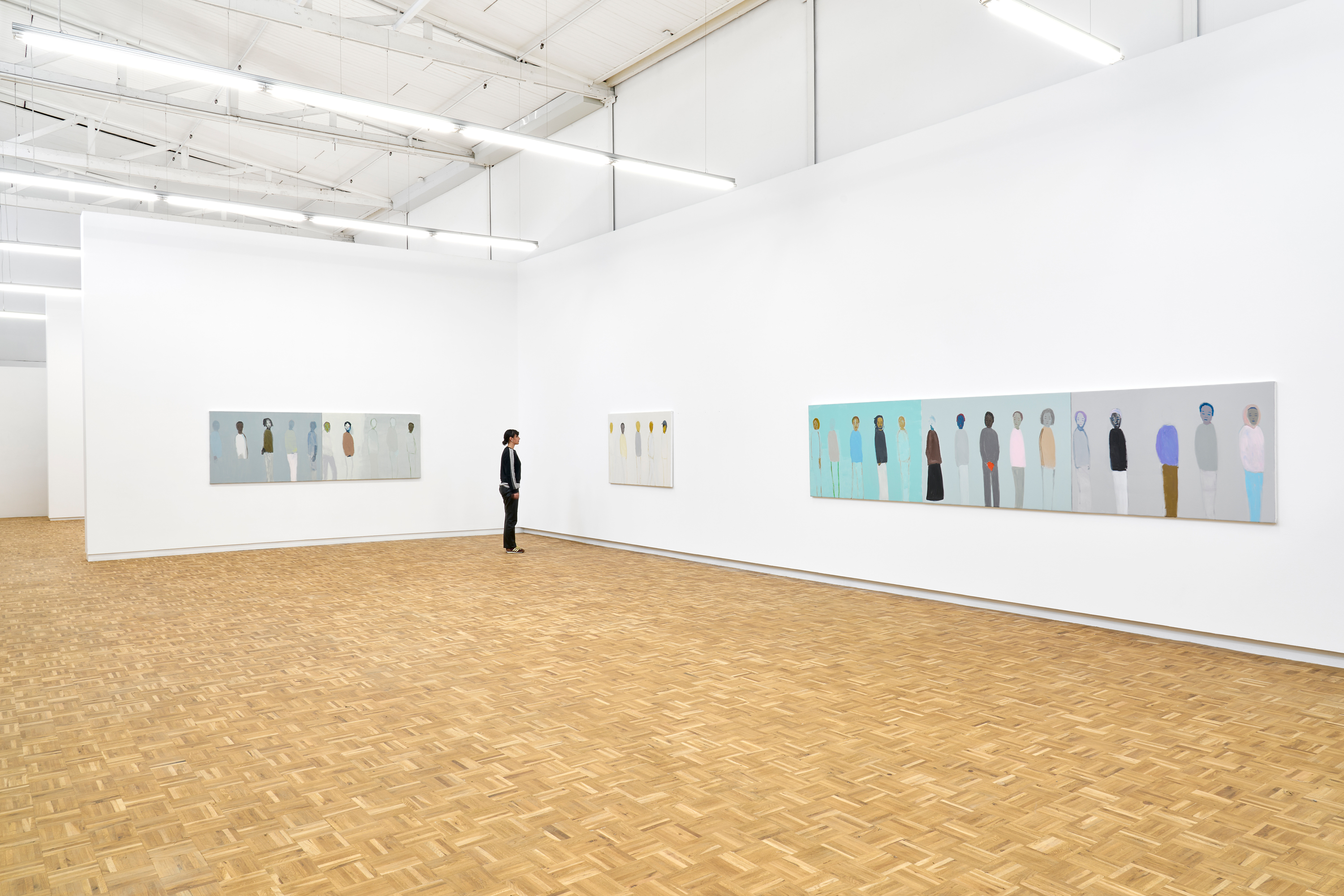





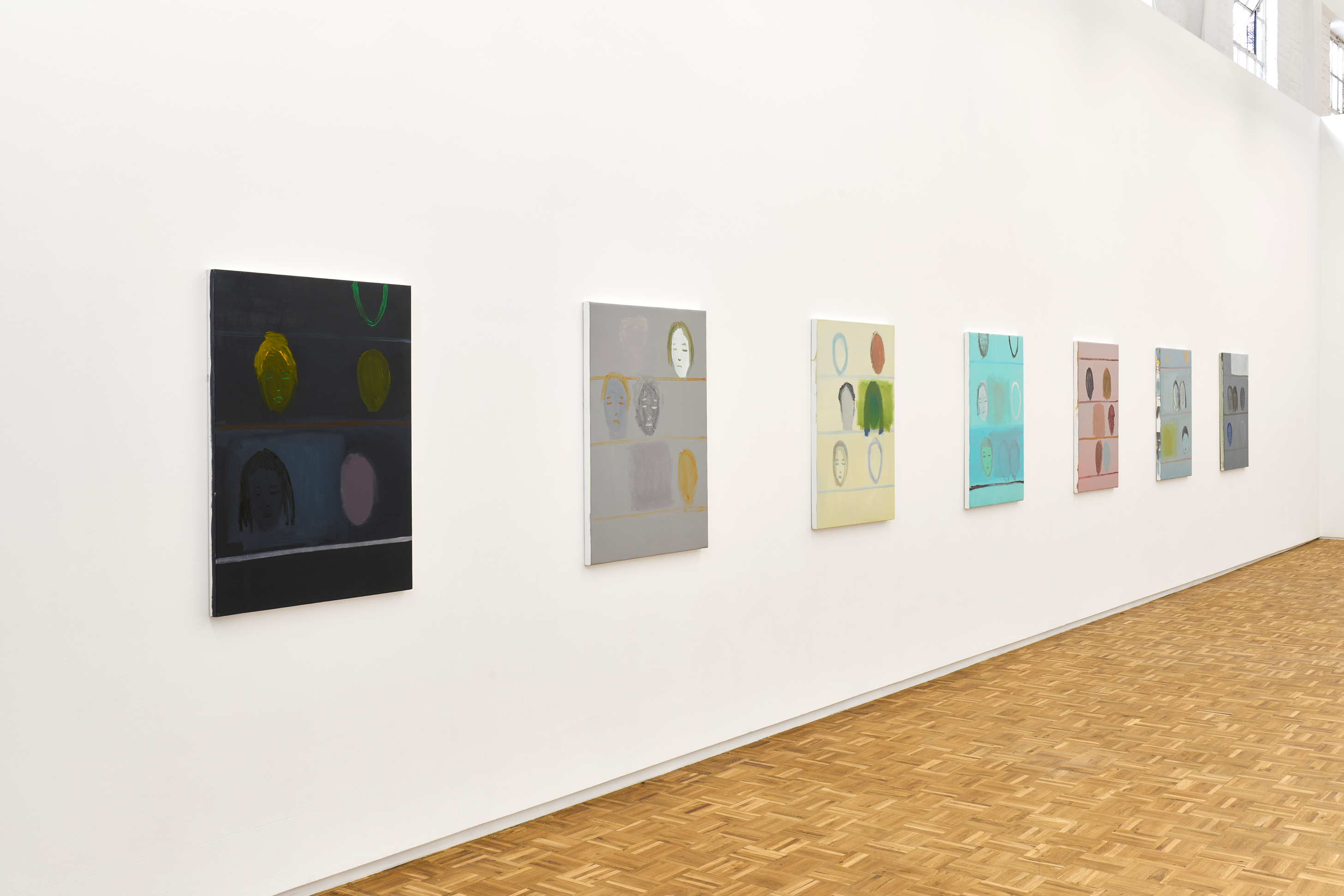




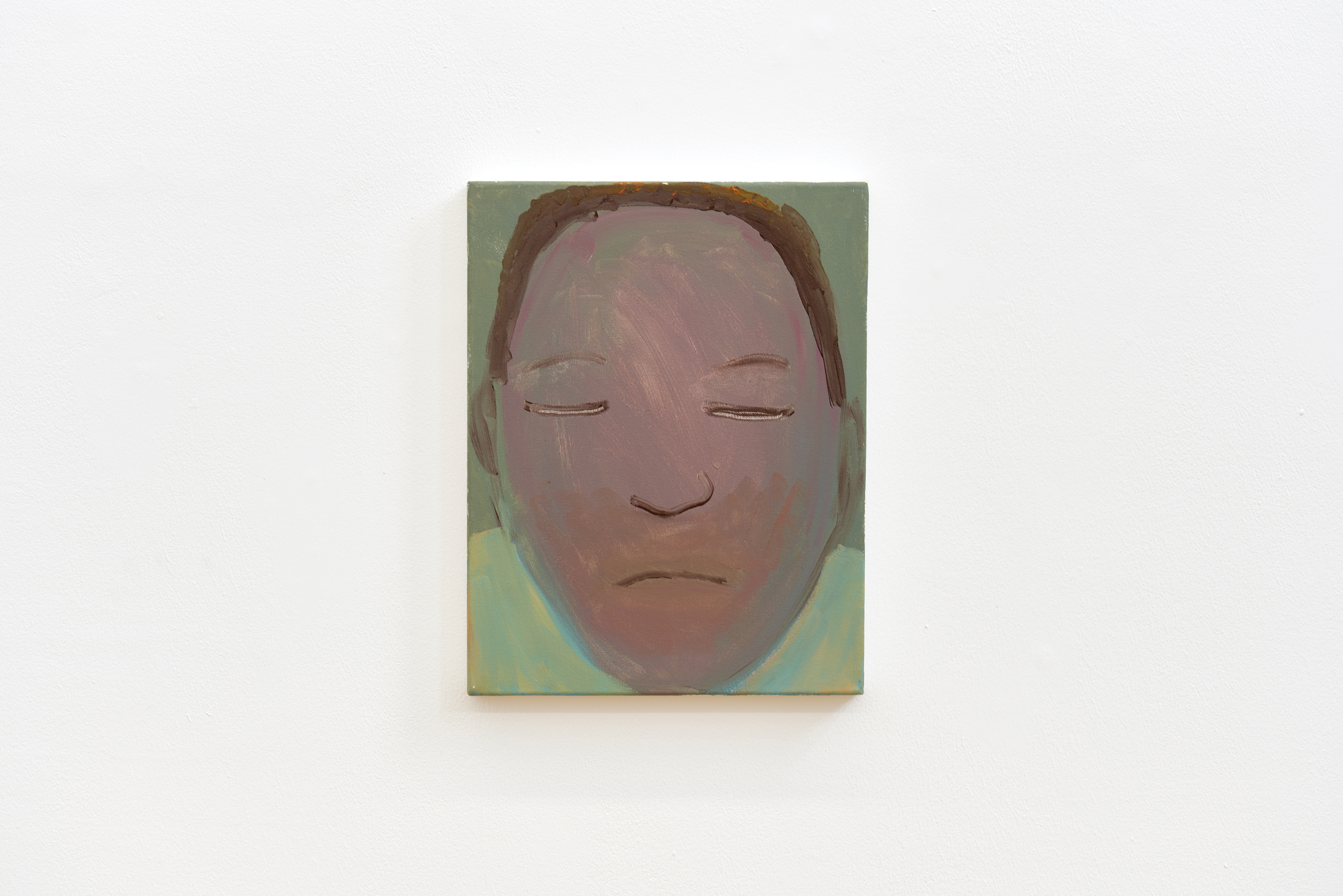

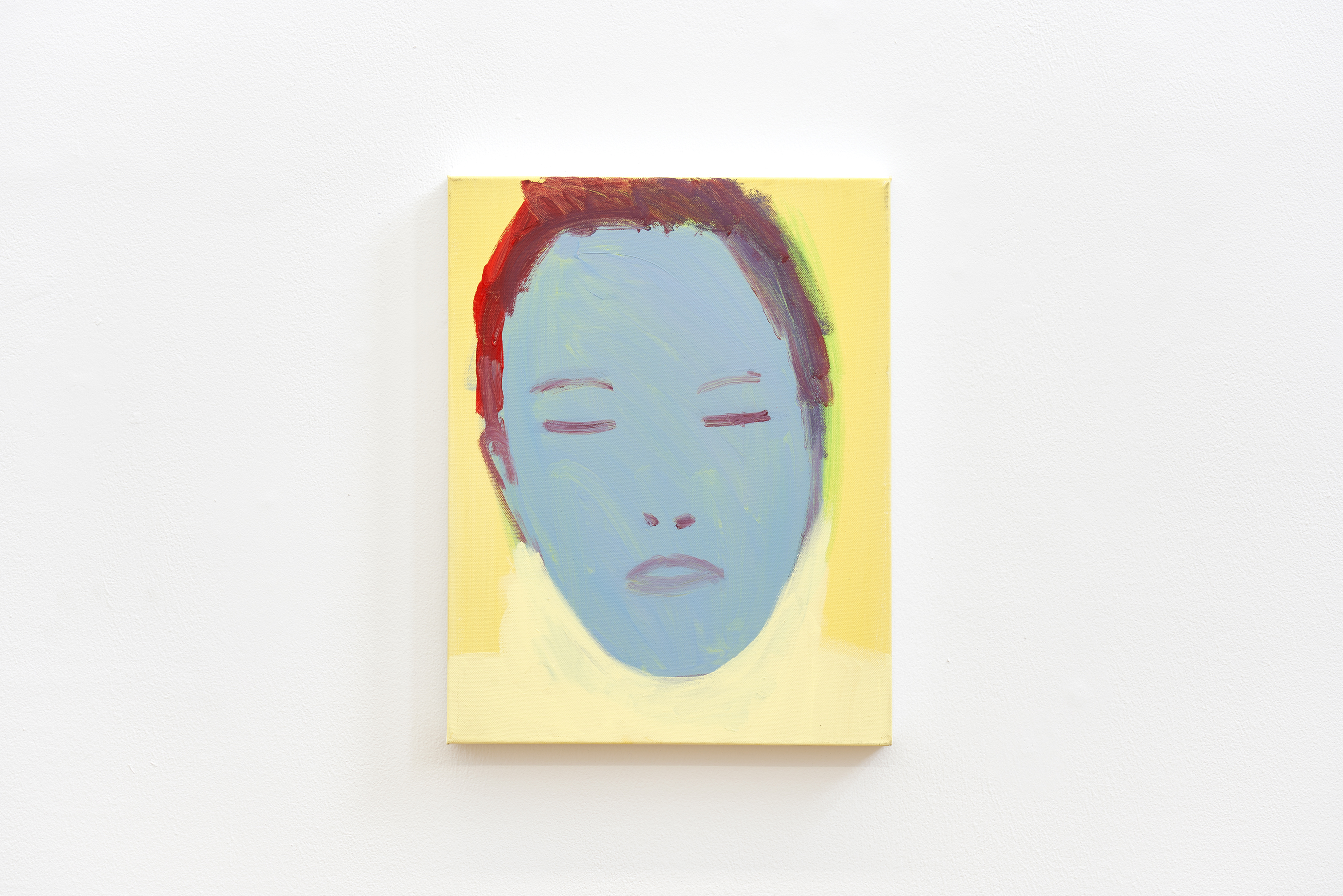
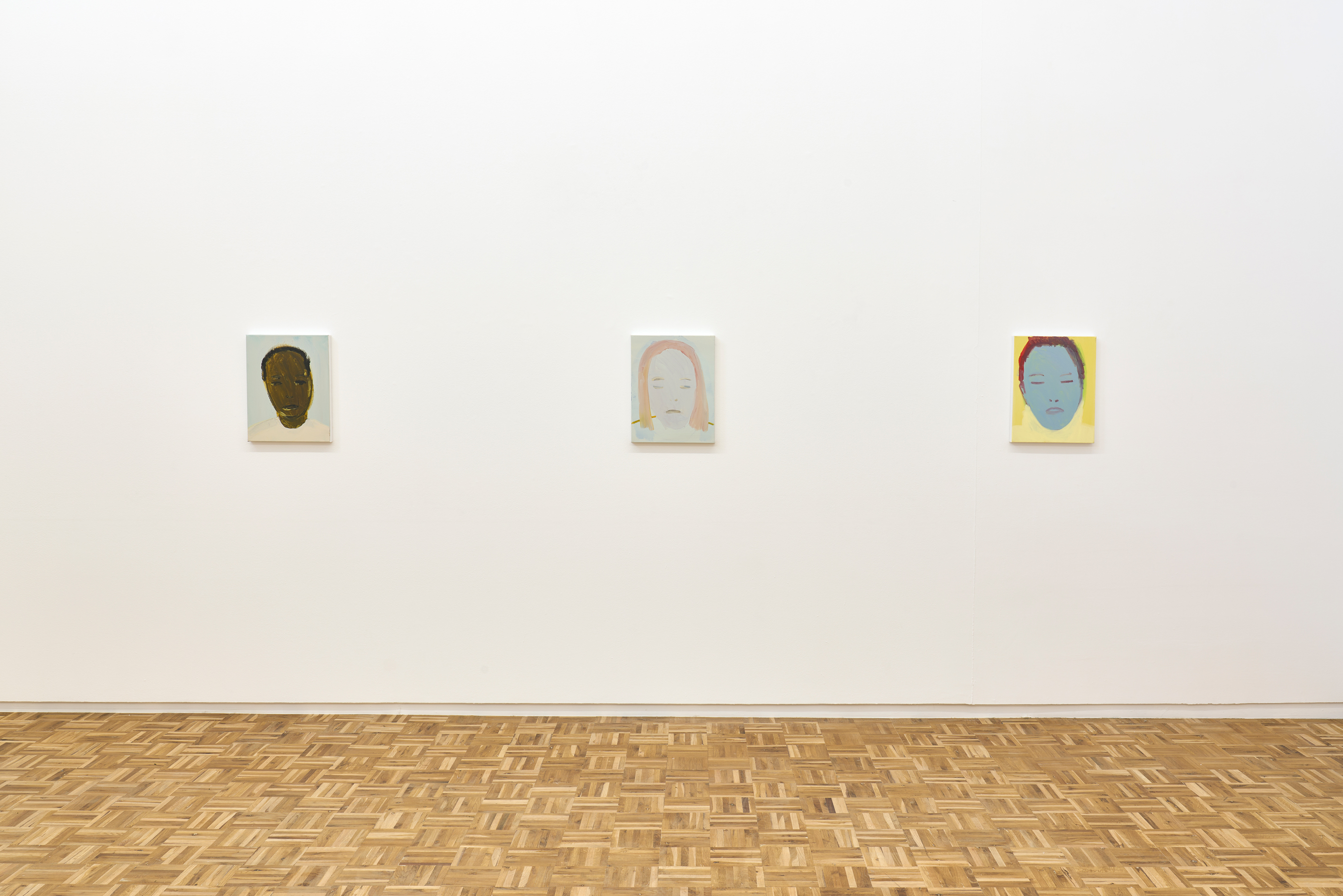
blank
is pleased to present Ceux qui sont partis et ceux qui sont restés, a solo exhibition by Gregory Olympio.
Produced in large part during the artist’s three month residency in Cape Town earlier this year, Ceux qui sont partis et ceux qui sont restés (‘those who left and those who stayed’) is Olympio’s third exhibition with the gallery. The impetus behind these works connects to Olympio’s particular sense of fixed placelessness; of having what he terms floating roots (racines flottante). Growing up in different places, the artist learned to shift between various contexts and cultures, absorbing and translating their paradoxes and commonalities. It is these shifting, interstitial spaces [between borders, languages and cultures] that inform his paintings.
Perhaps this unanchored state of being is reflected in the footless figures of his group portraits - no longer sitting as in previous works, Olympio’s imaginary subjects are now standing and appear to be inhabiting a transitional space of their own. Devoid of any other context, it’s unclear what his figures are moving towards or from, or whether they are simply waiting, queuing for something.
Elaborating on his Vases series, in which the artist’s experiments with composition and colour were further abstracted into the basic repetitive forms of vases or vessels on shelves, Olympio has introduced faces in place of the vases. He describes the way in which the composition reveals itself to him as an entirely intuitive exercise; the positioning of the ‘shelves’ is the only predetermined constraint. The rest of the painting is added and erased in layers until at last he arrives at a satisfactory formation. Olympio compares this process with that of Ifa geomancy - divination by means of the random placement of objects or patterns, the earliest versions of which originated in West Africa, where the artist first encountered the practice as a teenager.
Representing a new departure for the artist is the poignantly titled Je n’ai pas oublié - Nabile (‘I have not forgotten - Nabile’), a painting of Olympio’s late best friend. An act of remembrance, the intimate portrait was sketched from one the last photographs of his friend’s face. Working for the first time in this format, Olympio was subsequently inspired to produce a series of similarly close-cropped images of faces titled Ils sont apparus (‘They appeared’), in which the subjects - some of whom gaze out at us from the canvas, while most have their eyes closed against our gaze - are once again drawn from his imagination.
Olympio’s residency in Cape Town marked the first extended period of time the artist has spent on the African continent since leaving Benin in 2005. Uprooting himself from the familiarity of his Besançon studio, he sought to remove his practice from its usual context, re-situating it elsewhere, and adjusting to all the challenges and opportunities that presented. The artist’s adaptation to his new surroundings brought about an internal, emotional shift that we see reflected in the resulting body of work.
Born in 1986 in Lomé, Togo, Olympio graduated from the Beaux-Arts de Besançon in 2015. He has held four solo exhibitions to date, most recently Ligne (2022) and Lisière (2021) at blank projects. Group exhibitions include Common at A4 Arts Foundation, Cape Town, South Africa (2023), Respirer at La Box, Ensa Bouges, France (2021); Contemporary Benin at Fondation Donwahi, Abidjan, Côte d’Ivoire (2021) and Shaping the future at Arp Museum, Remagen, Germany (2019). Olympio lives and works in Besançon, France.
Produced in large part during the artist’s three month residency in Cape Town earlier this year, Ceux qui sont partis et ceux qui sont restés (‘those who left and those who stayed’) is Olympio’s third exhibition with the gallery. The impetus behind these works connects to Olympio’s particular sense of fixed placelessness; of having what he terms floating roots (racines flottante). Growing up in different places, the artist learned to shift between various contexts and cultures, absorbing and translating their paradoxes and commonalities. It is these shifting, interstitial spaces [between borders, languages and cultures] that inform his paintings.
Perhaps this unanchored state of being is reflected in the footless figures of his group portraits - no longer sitting as in previous works, Olympio’s imaginary subjects are now standing and appear to be inhabiting a transitional space of their own. Devoid of any other context, it’s unclear what his figures are moving towards or from, or whether they are simply waiting, queuing for something.
Elaborating on his Vases series, in which the artist’s experiments with composition and colour were further abstracted into the basic repetitive forms of vases or vessels on shelves, Olympio has introduced faces in place of the vases. He describes the way in which the composition reveals itself to him as an entirely intuitive exercise; the positioning of the ‘shelves’ is the only predetermined constraint. The rest of the painting is added and erased in layers until at last he arrives at a satisfactory formation. Olympio compares this process with that of Ifa geomancy - divination by means of the random placement of objects or patterns, the earliest versions of which originated in West Africa, where the artist first encountered the practice as a teenager.
Representing a new departure for the artist is the poignantly titled Je n’ai pas oublié - Nabile (‘I have not forgotten - Nabile’), a painting of Olympio’s late best friend. An act of remembrance, the intimate portrait was sketched from one the last photographs of his friend’s face. Working for the first time in this format, Olympio was subsequently inspired to produce a series of similarly close-cropped images of faces titled Ils sont apparus (‘They appeared’), in which the subjects - some of whom gaze out at us from the canvas, while most have their eyes closed against our gaze - are once again drawn from his imagination.
Olympio’s residency in Cape Town marked the first extended period of time the artist has spent on the African continent since leaving Benin in 2005. Uprooting himself from the familiarity of his Besançon studio, he sought to remove his practice from its usual context, re-situating it elsewhere, and adjusting to all the challenges and opportunities that presented. The artist’s adaptation to his new surroundings brought about an internal, emotional shift that we see reflected in the resulting body of work.
Born in 1986 in Lomé, Togo, Olympio graduated from the Beaux-Arts de Besançon in 2015. He has held four solo exhibitions to date, most recently Ligne (2022) and Lisière (2021) at blank projects. Group exhibitions include Common at A4 Arts Foundation, Cape Town, South Africa (2023), Respirer at La Box, Ensa Bouges, France (2021); Contemporary Benin at Fondation Donwahi, Abidjan, Côte d’Ivoire (2021) and Shaping the future at Arp Museum, Remagen, Germany (2019). Olympio lives and works in Besançon, France.


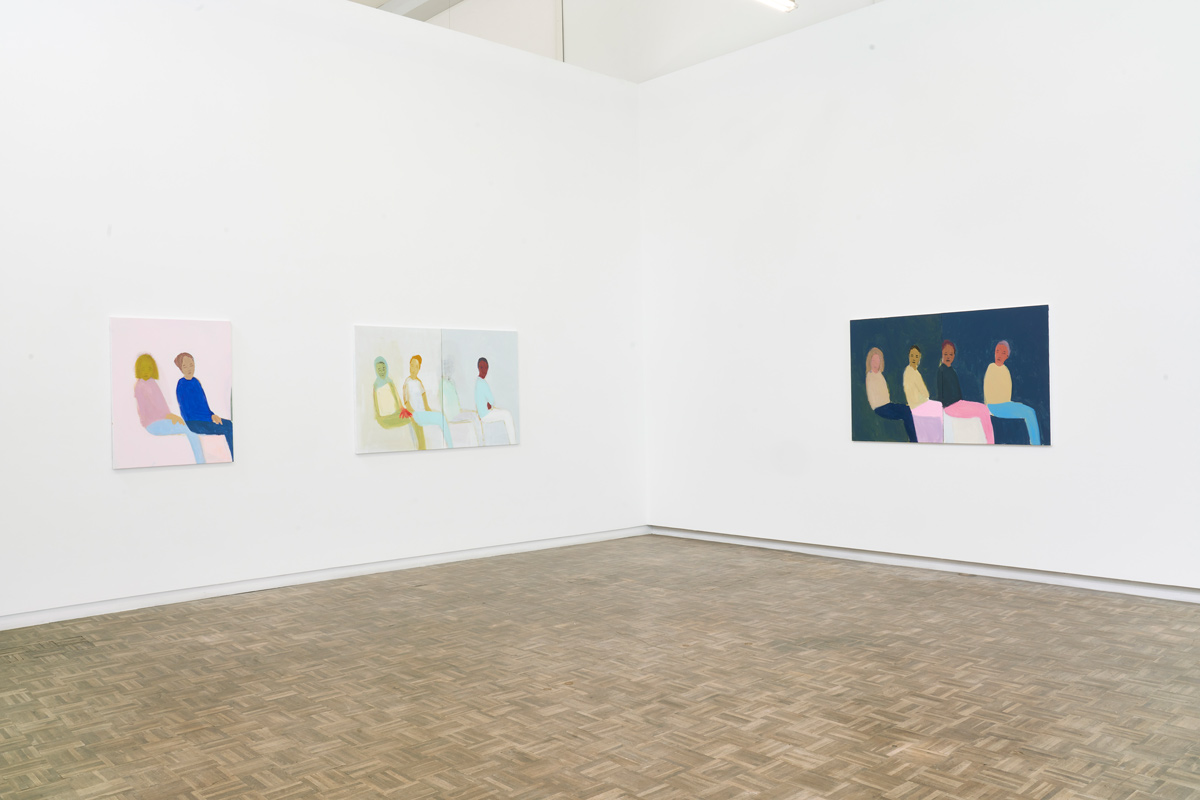


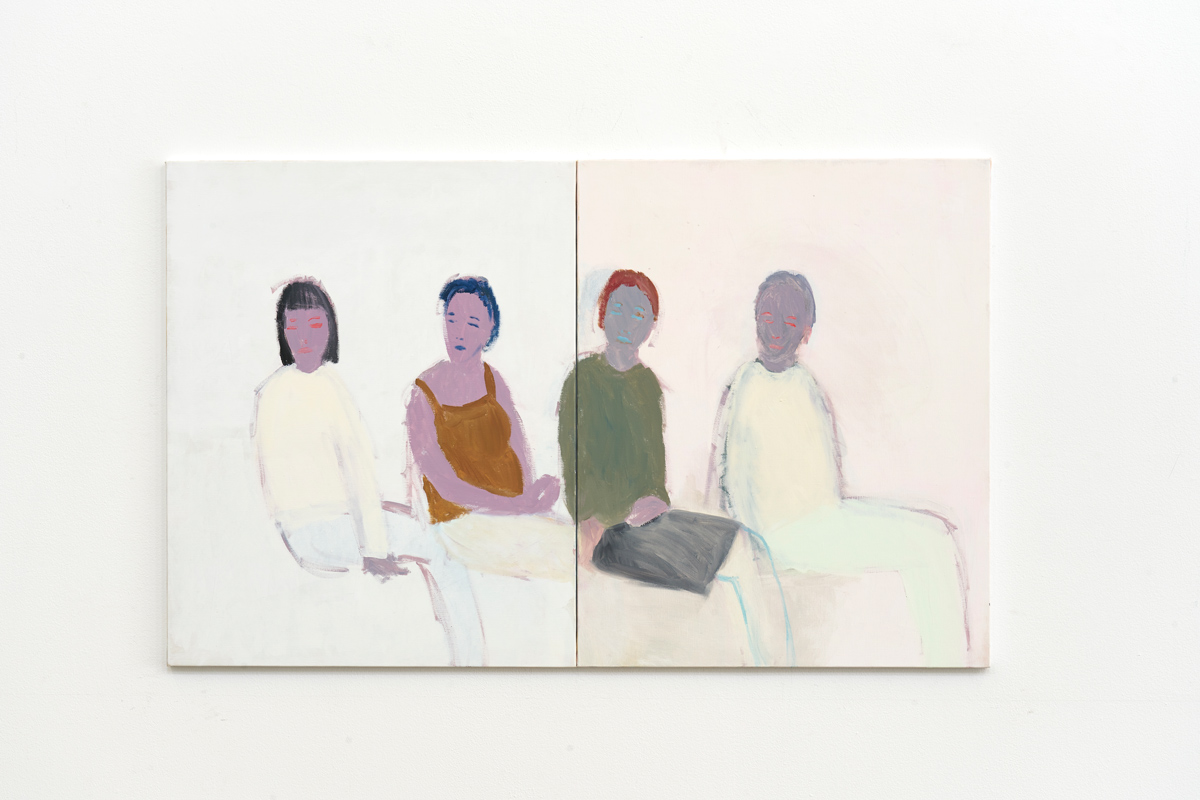







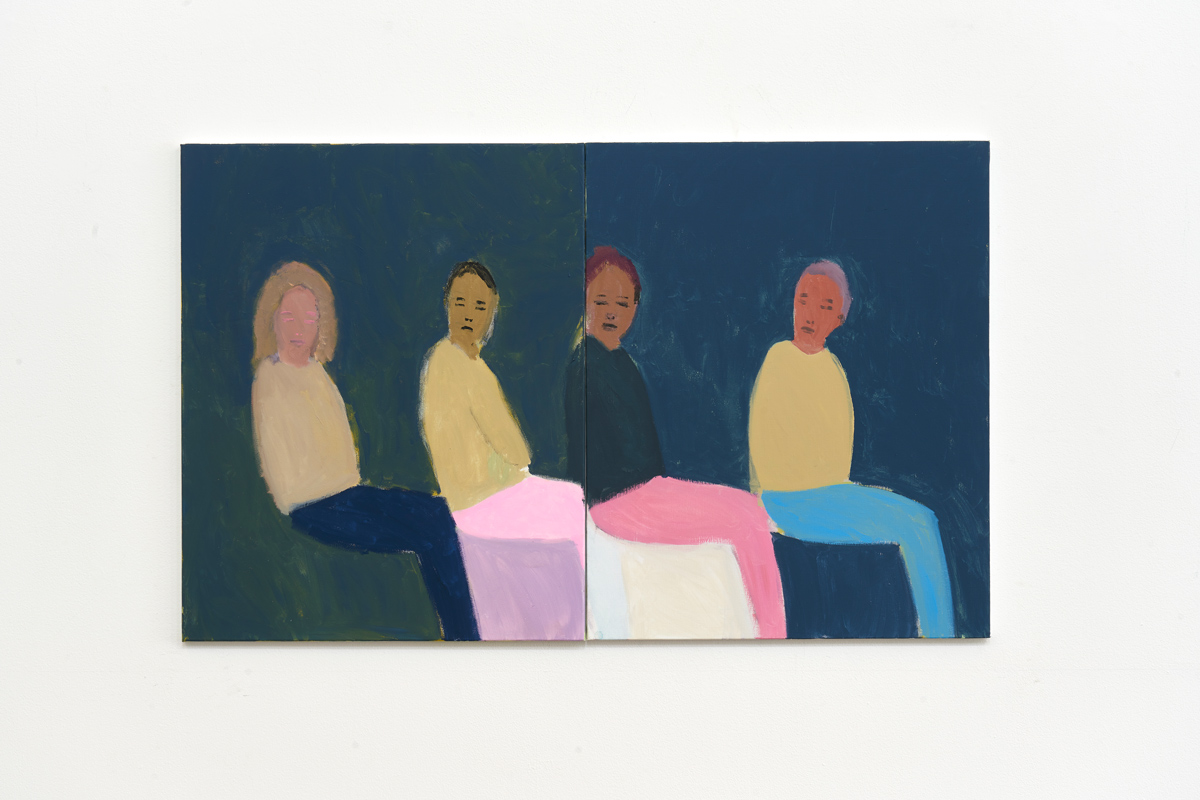


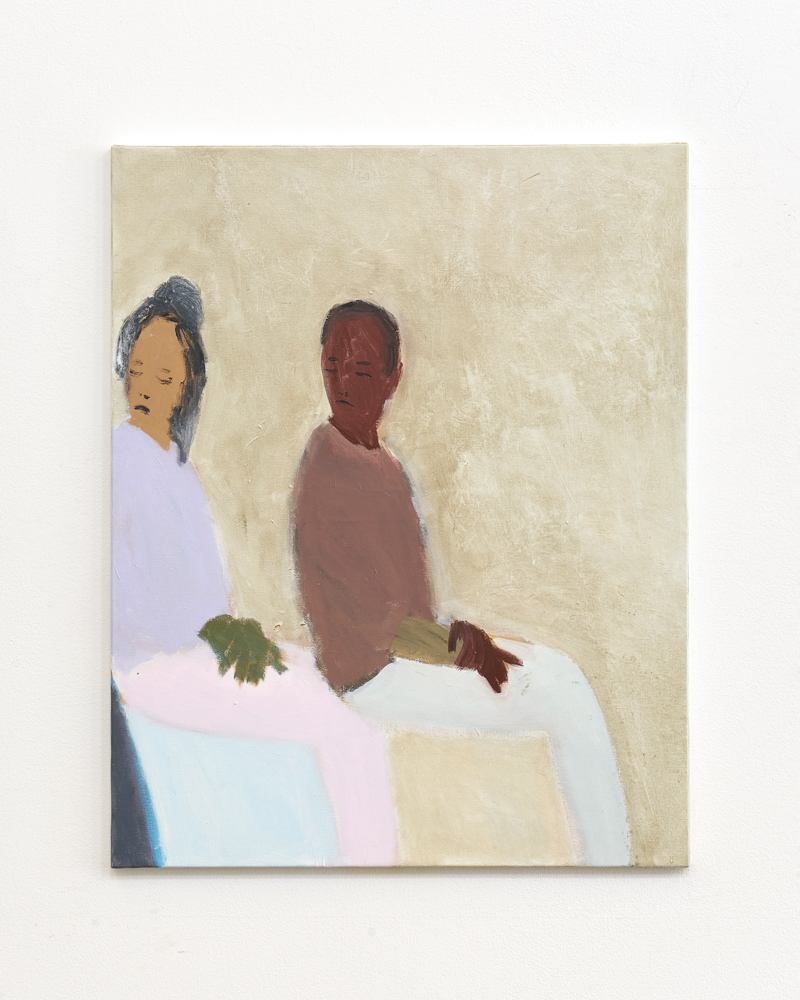


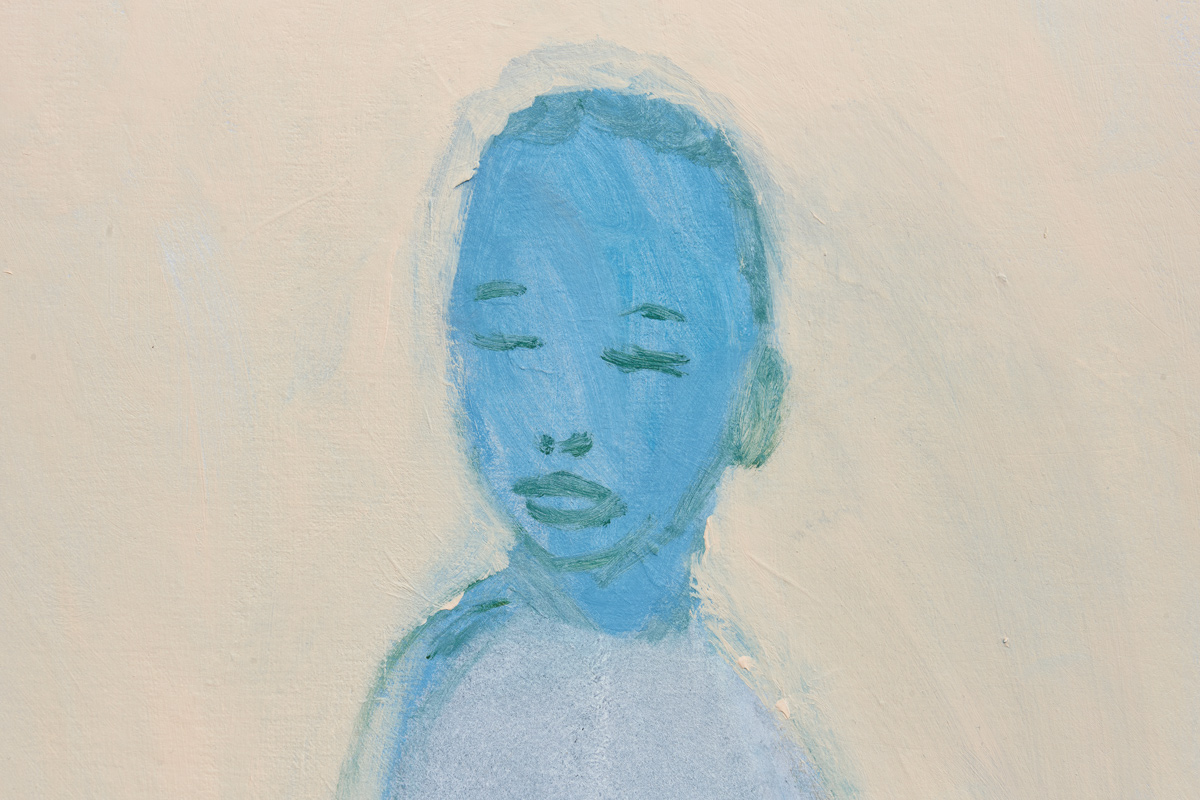

blank is pleased to announce the representation of Gregory Olympio with an exhibition of the artist’s latest body of work, his third solo project with the gallery.
Titled Ligne, the exhibition comprises a series of new paintings in which Olympio has expanded on the concept of his ‘double portraits’, by spreading his compositions of seated figures across two canvas panels, placed side by side. He writes, “I’ve had for a while a desire to juxtapose two halves of images to form a new one; a blended image, like a blended family. Intuitively I put two canvases side by side then I started to paint characters.”
Partly inspired by the people and situations he witnesses in public life - on the street or on the internet - Olympio’s ‘characters’ are painted from both memory and imagination. These characters embody particular attitudes or impressions, but are not bound by a singular, fixed identity: "I have no desire to represent something specific, no intention of representation.” Instead, with their sketched outlines and improbable skin tones, the figures shift between personas, confounding any ready conclusion as to their socio-cultural context.
These works on exhibition also represent a new direction in the artist’s process; rather than start his paintings on clean canvases, in this body of work Olympio decided to paint directly over unresolved and discarded compositions, allowing traces of the previous layers of paint to show through. Applying his paint in thin, transparent layers - “questioning the outline of forms in the paintings, which I wanted more fluid, less opaque since my last series” - this approach brought about surprise combinations of colour and shape.
For Olympio, it is important to make the canvases cohere as a series; whether they are recomposed paintings, or reharmonized compositions, or still others which are halves of an incomplete image. In this way, the works speak to the artist’s view of culture and identity as ambiguous, fluid and at times incongruous.
Titled Ligne, the exhibition comprises a series of new paintings in which Olympio has expanded on the concept of his ‘double portraits’, by spreading his compositions of seated figures across two canvas panels, placed side by side. He writes, “I’ve had for a while a desire to juxtapose two halves of images to form a new one; a blended image, like a blended family. Intuitively I put two canvases side by side then I started to paint characters.”
Partly inspired by the people and situations he witnesses in public life - on the street or on the internet - Olympio’s ‘characters’ are painted from both memory and imagination. These characters embody particular attitudes or impressions, but are not bound by a singular, fixed identity: "I have no desire to represent something specific, no intention of representation.” Instead, with their sketched outlines and improbable skin tones, the figures shift between personas, confounding any ready conclusion as to their socio-cultural context.
These works on exhibition also represent a new direction in the artist’s process; rather than start his paintings on clean canvases, in this body of work Olympio decided to paint directly over unresolved and discarded compositions, allowing traces of the previous layers of paint to show through. Applying his paint in thin, transparent layers - “questioning the outline of forms in the paintings, which I wanted more fluid, less opaque since my last series” - this approach brought about surprise combinations of colour and shape.
For Olympio, it is important to make the canvases cohere as a series; whether they are recomposed paintings, or reharmonized compositions, or still others which are halves of an incomplete image. In this way, the works speak to the artist’s view of culture and identity as ambiguous, fluid and at times incongruous.

















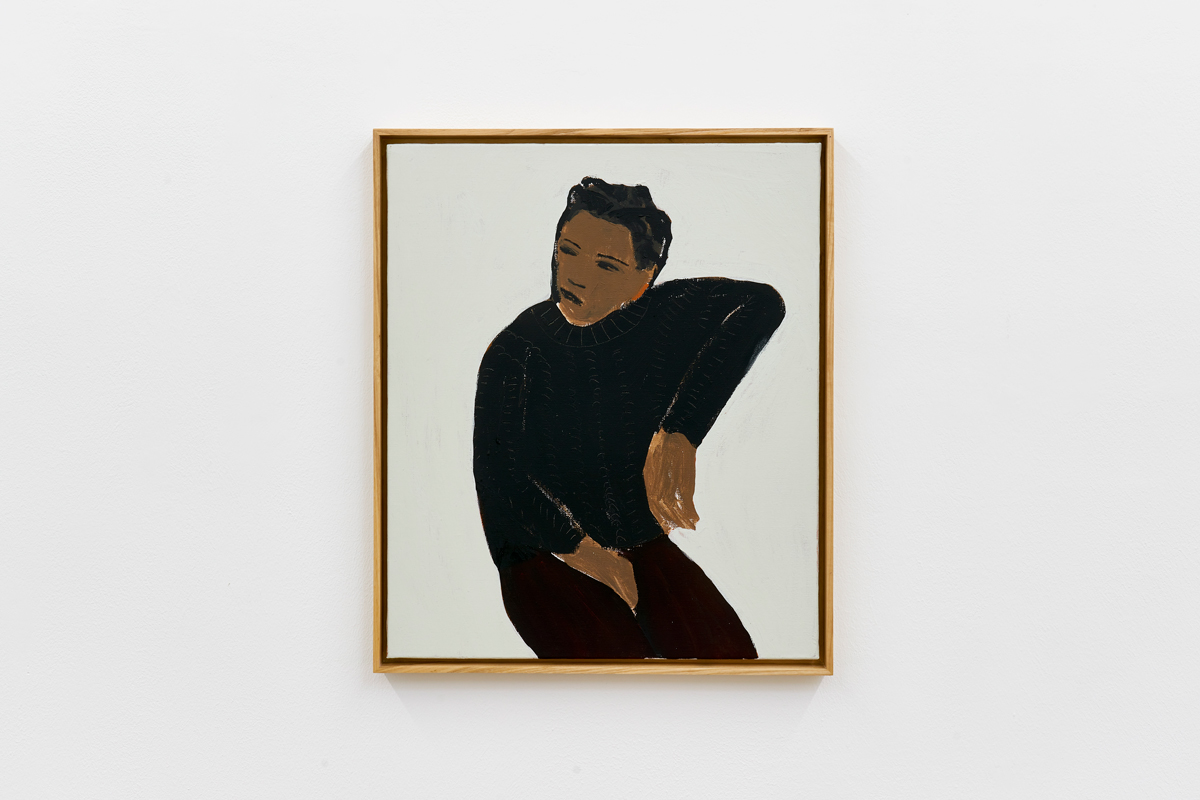



blank is pleased to present Lisière, a solo exhibition by Gregory Olympio.
Comprising a selection of new paintings, Lisière is the artist’s second showing with the gallery, following on from the group exhibition Portrait and Place in 2020. With this body of work, the title of which can be interpreted in a number of ways relating to borders, margins or the selvedge of a piece of cloth, Olympio expands on his ongoing series of portraits, and introduces a new series called Paysage grillage.
Olympio’s sensitively rendered paintings, expressive yet precise in their simplicity, speaks to his view of culture and identity as ambiguous and fluid. Wavering at the limits of abstraction, his subjects refuse clear definition; their edges moving in and out of focus like the outlines of a plural society. At times withholding their fixed shape, he emphasises the amorphous nature of individuals and cultures, and asks such questions as: how can we define ourselves in an increasingly globalised world? Are we that different? What are our common points?
The subjects of Olympio’s portraits are composed from multiple sources - a haircut seen online, a woman seen in the street, a photograph or a colour - all of which are pieced together to form a single image that, in the artist’s words, “pays homage to several people or things”. Although the subjects of his paintings are mostly imagined, Olympio approaches them with an empathy and insight as if they were real; an acute awareness of their outward projections as reflections of their inner selves, or attitudes. He states, “I observe the world around me. I look at the people I meet in the street but also the more distant world that I see through social networks. My portraits are about attitudes, they do not represent defined people. Maybe we can talk about archetypes but I prefer to talk about attitudes.” Defined as a position of the body indicating a particular mental state, these ‘attitudes’ are captured and portrayed with minimal means, confident and articulate in their simplicity.
On the formal aspects of his paintings, Olympio says, “I choose the positions of my subjects for their plastic interest - I play with the colours and shapes given by these postures to create an image.” In his compositions, the negative spaces created by the gestures of the body - such as the fold of an arm, or the bend of a leg - are as considered as the form of the body itself, resulting in a picture plane that is both flat and dimensional. The artist’s use of play and intuition in his process is particularly carried through in his relationship to colour, and its role in conveying the mood of his paintings. In much the same way that Olympio samples imagery from the world around him, so too is his palette made up of colours that he notices elsewhere and records in his mind, mixing and painting them from memory, sometimes with obsession until the necessity fades. This significance of colour in Olympio’s paintings is clearly expressed in titles such as Chaussettes vertes and Sans titre (Pantalon jaune, t-shirt noir).
In Paysage grillage, the artist teases at the concept of landscape (paysage) painting with a series of works depicting chain link fences (grillage). Ubiquitous almost to the point of invisibility, these man-made boundaries have reshaped our landscapes so much so that they have become part of them. Studies of line, surface and colour, Olympio’s paintings reduce the image of the fence to abstracted compositions; references to barriers and divisions recalled only through title. Presented in juxtaposition to his portraits, they point to the liminal spaces in and between our lives: rites of passage, movements across borders, exchanges of culture, and the tensions that separate them.
Olympio’s multivalent approach to art making is influenced by his mixed cultural upbringing. Born in 1986 in Lomé, Togo, Olympio moved to neighbouring Benin a few years later, and eventually took up his studies at the Beaux-Arts in Besançon, France, where he lives and works today. His experience of bridging Beninese, Togolese and French cultures (and territories) has brought about in him an interest in those more or less tangible spaces that connect or separate us - the overlaps or intersections that exist between people, beyond the usual social-cultural identifiers (race, gender, religion) that continue to bind us.
Comprising a selection of new paintings, Lisière is the artist’s second showing with the gallery, following on from the group exhibition Portrait and Place in 2020. With this body of work, the title of which can be interpreted in a number of ways relating to borders, margins or the selvedge of a piece of cloth, Olympio expands on his ongoing series of portraits, and introduces a new series called Paysage grillage.
Olympio’s sensitively rendered paintings, expressive yet precise in their simplicity, speaks to his view of culture and identity as ambiguous and fluid. Wavering at the limits of abstraction, his subjects refuse clear definition; their edges moving in and out of focus like the outlines of a plural society. At times withholding their fixed shape, he emphasises the amorphous nature of individuals and cultures, and asks such questions as: how can we define ourselves in an increasingly globalised world? Are we that different? What are our common points?
The subjects of Olympio’s portraits are composed from multiple sources - a haircut seen online, a woman seen in the street, a photograph or a colour - all of which are pieced together to form a single image that, in the artist’s words, “pays homage to several people or things”. Although the subjects of his paintings are mostly imagined, Olympio approaches them with an empathy and insight as if they were real; an acute awareness of their outward projections as reflections of their inner selves, or attitudes. He states, “I observe the world around me. I look at the people I meet in the street but also the more distant world that I see through social networks. My portraits are about attitudes, they do not represent defined people. Maybe we can talk about archetypes but I prefer to talk about attitudes.” Defined as a position of the body indicating a particular mental state, these ‘attitudes’ are captured and portrayed with minimal means, confident and articulate in their simplicity.
On the formal aspects of his paintings, Olympio says, “I choose the positions of my subjects for their plastic interest - I play with the colours and shapes given by these postures to create an image.” In his compositions, the negative spaces created by the gestures of the body - such as the fold of an arm, or the bend of a leg - are as considered as the form of the body itself, resulting in a picture plane that is both flat and dimensional. The artist’s use of play and intuition in his process is particularly carried through in his relationship to colour, and its role in conveying the mood of his paintings. In much the same way that Olympio samples imagery from the world around him, so too is his palette made up of colours that he notices elsewhere and records in his mind, mixing and painting them from memory, sometimes with obsession until the necessity fades. This significance of colour in Olympio’s paintings is clearly expressed in titles such as Chaussettes vertes and Sans titre (Pantalon jaune, t-shirt noir).
In Paysage grillage, the artist teases at the concept of landscape (paysage) painting with a series of works depicting chain link fences (grillage). Ubiquitous almost to the point of invisibility, these man-made boundaries have reshaped our landscapes so much so that they have become part of them. Studies of line, surface and colour, Olympio’s paintings reduce the image of the fence to abstracted compositions; references to barriers and divisions recalled only through title. Presented in juxtaposition to his portraits, they point to the liminal spaces in and between our lives: rites of passage, movements across borders, exchanges of culture, and the tensions that separate them.
Olympio’s multivalent approach to art making is influenced by his mixed cultural upbringing. Born in 1986 in Lomé, Togo, Olympio moved to neighbouring Benin a few years later, and eventually took up his studies at the Beaux-Arts in Besançon, France, where he lives and works today. His experience of bridging Beninese, Togolese and French cultures (and territories) has brought about in him an interest in those more or less tangible spaces that connect or separate us - the overlaps or intersections that exist between people, beyond the usual social-cultural identifiers (race, gender, religion) that continue to bind us.